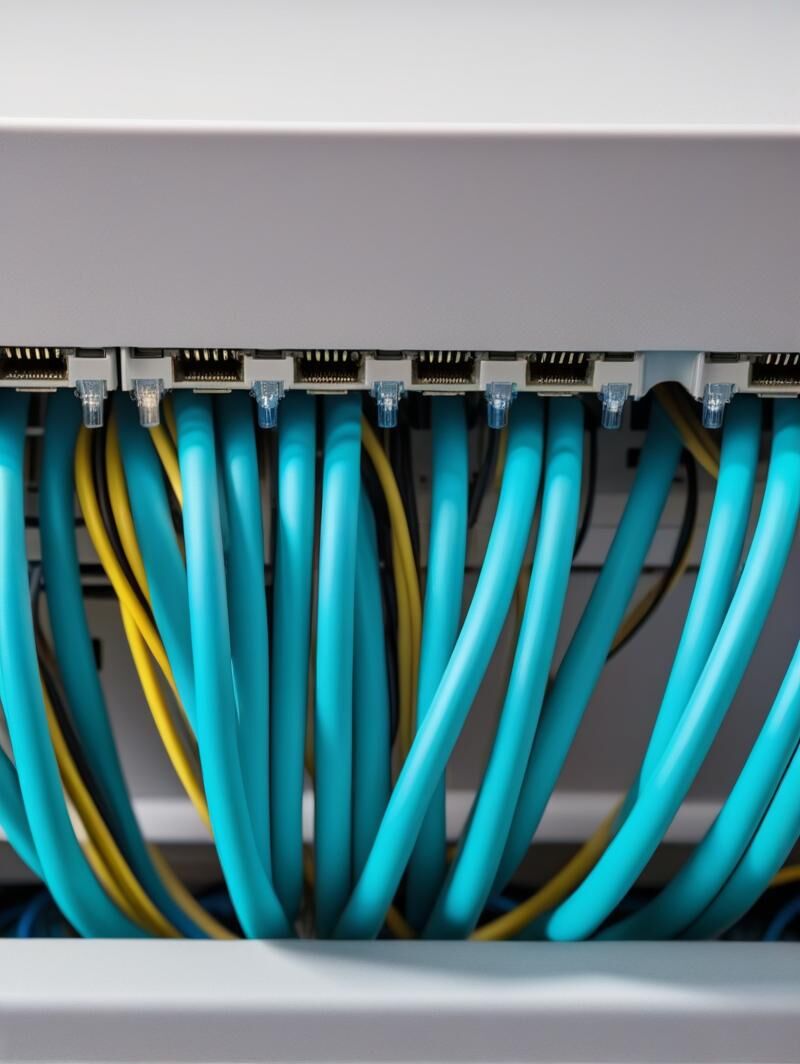Enhance Your VoIP Network Security
Comprehensive Guide to Securing VoIP Networks
Discover essential strategies for protecting your VoIP infrastructure from potential threats. Learn about firewall configurations, VPN setups, and more to ensure seamless and secure communication.


Designing a Robust VoIP Network
When designing a network for VoIP services, consider the bandwidth requirements to ensure high-quality voice transmission. Implement Quality of Service (QoS) settings to prioritize voice traffic and reduce latency. Essential hardware includes routers and switches capable of handling VoIP traffic efficiently. Choose network topologies that support scalability and reliability, such as star or mesh configurations, to accommodate growing SMB needs.

Securing Your VoIP Infrastructure
Securing a VoIP network involves configuring firewalls to block unauthorized access and setting up VPNs for encrypted communication. Implement intrusion detection and prevention systems to monitor and respond to suspicious activities. Be aware of VoIP-specific threats like eavesdropping and denial-of-service attacks, and apply mitigation strategies such as encryption and traffic filtering to safeguard your network.
Advanced VoIP Security Measures
Enhance your VoIP security by regularly updating software and firmware to patch vulnerabilities. Use strong authentication methods and encrypt sensitive data to prevent unauthorized access. Conduct regular security audits and penetration testing to identify and address potential weaknesses in your network. Educate your team on security best practices to foster a culture of vigilance and preparedness.

What are the common VoIP security threats?
VoIP networks face threats like eavesdropping, where unauthorized users listen to calls, and denial-of-service attacks, which can disrupt services. Understanding these threats is crucial for implementing effective security measures.
How can I secure my VoIP network?
Securing a VoIP network involves using firewalls, setting up VPNs, and employing intrusion detection systems. Regular updates and monitoring are also essential to maintain security.
What is the role of Quality of Service (QoS) in VoIP?
Quality of Service (QoS) ensures that voice data is prioritized over other types of data, reducing latency and improving call quality. It’s a critical component of VoIP network design.
Why is documentation important for network security?
Documentation provides a clear record of network configurations and security policies, which is essential for troubleshooting, audits, and ensuring consistent security practices.
What are the benefits of using a VPN for VoIP?
A VPN encrypts data, providing a secure tunnel for VoIP communications. This helps protect against eavesdropping and ensures data integrity during transmission.
How often should network security be reviewed?
Regular reviews, ideally quarterly, help identify vulnerabilities and ensure that security measures are up-to-date with the latest threats and technologies.
What is the difference between Windows and Linux server setups for VoIP?
Windows servers often offer a more user-friendly interface, while Linux servers provide greater flexibility and customization. The choice depends on specific business needs and IT expertise.
Mitigation Strategies for VoIP Security
Enhancing VoIP Network Security
To effectively mitigate VoIP-specific threats, it is essential to implement a multi-layered security approach. Start by configuring robust firewalls to filter and monitor traffic. Utilize Virtual Private Networks (VPNs) to encrypt communications, ensuring data confidentiality and integrity. Deploy Intrusion Detection and Prevention Systems (IDPS) to identify and block suspicious activities in real-time. Regularly update and patch all network devices to protect against known vulnerabilities. Additionally, educate employees on security best practices to prevent social engineering attacks. By combining these strategies, you can significantly reduce the risk of security breaches and maintain a secure VoIP environment.

Comprehensive Server Configuration Guide
This documentation provides detailed instructions for setting up and configuring essential network servers to support VoIP services. It covers email, web, and data sharing servers, ensuring a secure and efficient network infrastructure.

Setting Up an Email Server
Choose between Microsoft Exchange or Postfix for your email server. Begin by installing the software, configuring user accounts, and setting up spam filters. Ensure encryption is enabled for secure communications.
Configuring a Web Server
Select either Windows or Linux as your operating system. Install Apache or IIS, and configure HTTPS to secure web traffic. Implement DDoS protection measures to safeguard against attacks.
Setting Up a Data Sharing Server
For Linux, use Samba; for Windows, opt for Windows File Server. Configure shared folders, set access controls, and ensure data encryption to protect sensitive information.
Cross-Platform Server Management
Managing a mixed-OS environment requires understanding the nuances of each system. Use tools like Ansible for automation and ensure consistent security policies across platforms.
Importance of Regular Maintenance
Regular maintenance is crucial for network performance and security. Schedule routine updates, monitor system logs, and conduct security audits to identify and address potential issues proactively.
Documenting Your VoIP Network
The Essential Role of Documentation
Comprehensive documentation is the backbone of a secure and efficient VoIP network. It serves as a detailed blueprint for network design, server configurations, and security policies. By meticulously documenting each aspect, from firewall settings to VPN configurations, you ensure that your network can be easily managed and scaled. This practice not only aids in troubleshooting but also provides a clear framework for future upgrades and security audits. Embrace documentation as a vital component of your network strategy to maintain robust security and operational excellence.
Secure Your VoIP Network Today
Take proactive steps to safeguard your VoIP network by implementing industry-recommended security practices. From configuring firewalls and setting up VPNs to deploying intrusion detection systems, every measure counts in protecting your communication infrastructure. At virtualtrunks.com, we empower you with the knowledge and tools needed to defend against VoIP-specific threats. Don’t wait for vulnerabilities to be exploited—act now to fortify your network and ensure seamless, secure communication for your business.